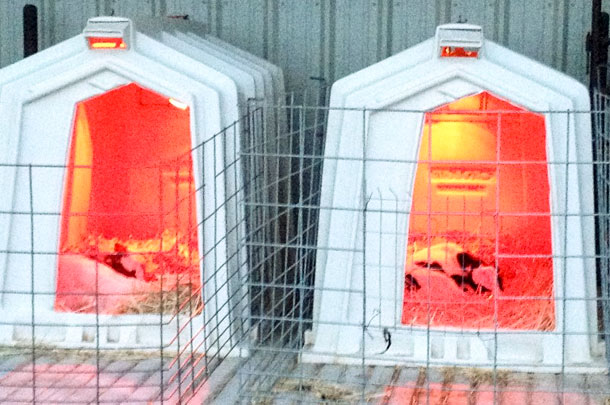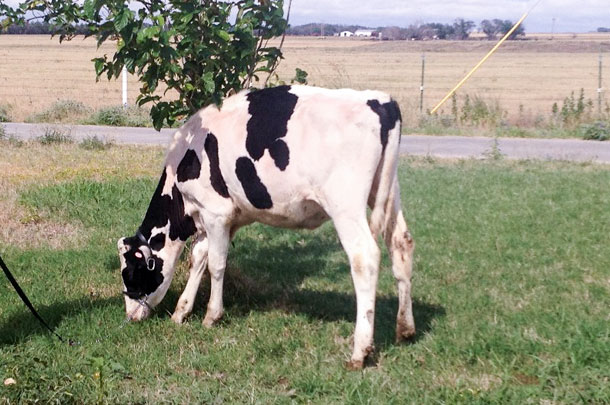Every day, dairy farmers go to great lengths to care for their cows. In this series from Dairy MAX, Anita van der Laan of Van der Laan Dairy in Oklahoma shares her story about caring for a premature calf through a snakebite. Can you relate? Allison was born to a first-time mom on a Saturday morning – about five weeks early. No hair – in February.
The morning crew found her, licked clean by her mom. Her mother’s udder was very small and had almost no colostrum for the baby. I got a phone call from the herd manager, came to the heifer pen and just picked her up like a dog. She was 25 pounds, so easy to carry (for comparison, a Milking Shorthorn was born a day later at 135 pounds). She was cold, so I brought her into the house, put her next to the fireplace and dried her with the blow dryer from our bathroom, wrapping warm towels around her.
I defrosted some colostrum for her and gave her small amounts during the day. She started walking that afternoon. During the night, we were still feeding her colostrum. The next morning, she was very perky, walking through the living room. Thank goodness we had no carpet!

Later, we were able to move her to the barn. She got a calf house with lots of straw and two heat lamps. We gave her four feedings a day. She got her first quarter-bottle at 4 a.m. and her fourth quarter-bottle at 11 p.m., like a human baby.
She started eating a little grain after about two and a half weeks, and we weaned her after she was about 4 months old. She sized up good then, as if she had been born on time.
A scare from a snake
When Allison was about 7 months old, we found her in her pen with her back leg badly swollen. We couldn't figure out why until we found two puncture wounds – typical for a snakebite. We put her on antibiotics, but it didn't work; her wound turned into an abscess, and we had to drain it. Our veterinarian did it for us first and taught us how so we could do it ourselves every other day. At nighttime, we put a sweat wrap for horses on her leg, filled with ice. It was a sight to see her walking like that! But she never hated us for doing this to her. She maybe liked all the attention and knew we meant well for her. She completely trusted us.
Finally, after six weeks, she was better. Her hair didn't grow back on the wound for months, but now you can barely tell where it was.

Normally, we breed around 15 to16 months depending on weight. Allison was skinny. She had trouble growing after the ordeal, so we didn't breed her until she was about 20 months old. Our surprise came nine months later: twin girls! Both were healthy, on time and a normal weight. We named them Allison Two and Allison Three. After all that, this was a bonus.
Allison grew nicely in the heifer pen, to be just as tall or taller than her herdmates, had another heifer named Alice and is now a nice, healthy cow who milks above average. Her last five milk tests have all been over 100 pounds! ![]()
Anita van der Laan is co-owner of Van der Laan Dairy in Oklahoma. Email Anita van der Laan.
PHOTO 1: Allison was born at 25 pounds and was fed four small bottles a day.
PHOTO 2: Anita van der Laan placed Allison in a calf hutch with two heat lamps.
PHOTO 3: Allison the preemie grew well as a heifer and ended up just as tall as her herdmates. Photos courtesy of Anita van der Laan.



